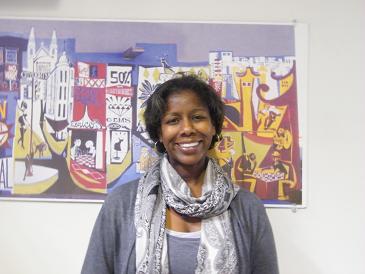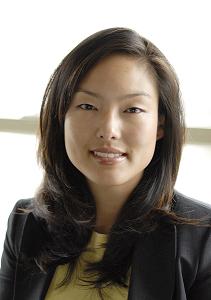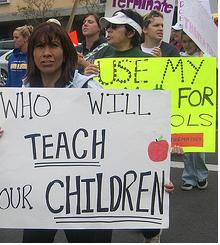SAN FRANCISCO RACES
Board of Supervisors
District 1
ERIC MAR
The incumbent District 1 supervisor, Jake McGoldrick, likes to joke that he holds his seat only because Eric Mar’s house burned down eight years ago. Back then Mar, who has had a stellar career on the school board, decided to wait before seeking higher office.
But now McGoldrick — overall a good supervisor who was wrong on a few key votes — is termed out, and progressive San Francisco is pretty much unanimous in supporting Mar as his successor.
Mar, a soft-spoken San Francisco State University teacher, was a strong critic of former school superintendent Arlene Ackerman and a leader in the battle to get the somewhat dictatorial and autocratic administrator out of the district. He’s been a key part of the progressive majority that’s made substantial progress in improving the San Francisco public schools.
He’s a perfect candidate for District 1. He has strong ties to the district and its heavily Asian population. He’s a sensible progressive with solid stands on the key issues and a proven ability to get things done. He supports the affordable housing measure, Proposition B; the Clean Energy Act, Proposition H; and the major new revenue measures. He’s sensitive to tenant issues, understands the need for a profound new approach to affordable housing, and wants to solve the city’s structural budget problems with new revenue, not just cuts.
His chief opponent, Sue Lee, who works for the Chamber of Commerce, doesn’t support Prop. H and won’t even commit to supporting district elections. She ducked a lot of our questions and was either intentionally vague or really has no idea what she would do as a supervisor. She’s no choice for the district, and we found no other credible candidates worthy of our endorsement. Vote for Eric Mar.
District 3
1. DAVID CHIU
2. DENISE MCCARTHY
3. TONY GANTNER
The danger in this district is Joe Alioto. He’s smooth, he’s slick, he’s well funded — and he would be a disaster for San Francisco. Make no mistake about it, Alioto is the candidate of downtown — and thanks to his famous name and wads of big-business cash, he’s a serious contender.
Two progressive candidates have a chance at winning this seat and keeping Alioto off the board. David Chiu is a member of the Small Business Commission (SBC) and the Democratic County Central Committee (DCCC) and is a former civil rights lawyer who now manages a company that sells campaign software. Denise McCarthy ran the Telegraph Hill Neighborhood Center for 25 years and spent 7 years on the Port Commission.
Tony Gantner, a retired lawyer, is also in the race, although he is running well behind the others in the polls.
We have concerns about all the candidates. Chiu has a solid progressive record as a commissioner and committee member: He was one of only two SBC members who supported the living-wage ordinance and Sup. Tom Ammiano’s city health care plan. He backed Sup. Aaron Peskin, his political mentor, for chair of the DCCC. He backs Prop. H, supports the two revenue measures and the affordable-housing fund, and wants to give local small businesses a leg up in winning city contracts. He has some creative ideas about housing, including a community stabilization fee on new development.
He’s also a partner in a company that received $143,000 last year from PG&E and that has worked with Republicans and some nasty business interests.
Chiu says he doesn’t get to call all the shots at Grassroots Enterprises, which he cofounded. He describes the firm as a software-licensing operation, which isn’t exactly true — the company’s own Web site brags about its ability to offer broad-based political consulting and communication services.
But Chiu vowed to resign from the company if elected, and given his strong record on progressive issues, we’re willing to take a chance on him.
McCarthy has a long history in the neighborhood, and we like her community perspective. She supports Prop. H and the affordable-housing measure. She’s a little weak on key issues like the city budget — she told us she "hadn’t been fully briefed," although the budget is a public document and the debate over closing a massive structural deficit ought to be a central part of any supervisorial campaign. And while she said there "have to be some new taxes," she was very vague on where new revenue would come from and what specifically she would be willing to cut. She supported Gavin Newsom for mayor in 2003 and told us she doesn’t think that was a bad decision. It was. But she has by far the strongest community ties of any candidate in District 3. She’s accessible (even listing her home phone number in her campaign material), and after her years on the Port Commission, she understands land-use issues.
Gantner has been a supporter of the Clean Energy Act from the start and showed up for the early organizing meetings. He has the support of the Sierra Club and San Francisco Tomorrow and talks a lot about neighborhood beatification. But we’re a little nervous about his law-and-order positions, particularly his desire to crack down on fairs and festivals and his strong insistence that club promoters are responsible for all the problems on the streets.
But in the end, Chiu, McCarthy, and Gantner are all acceptable candidates, and Joe Alioto is not. Fill your slate with these three.
District 4
DAVE FERGUSON
What a mess.
We acknowledge that this is one of the more conservative districts in the city. But the incumbent, Carmen Chu, and her main opponent, Ron Dudum, are terrible disappointments.
It’s possible to be a principled conservative in San Francisco and still win progressive respect. We often disagreed over the years with Quentin Kopp, the former supervisor, state senator, and judge, but we never doubted his independence, sincerity, or political skills. Sean Elsbernd, who represents District 7, is wrong on most of the key issues, but he presents intelligent arguments, is willing to listen, and isn’t simply a blind loyalist of the mayor.
Chu has none of those redeeming qualities. She ducks questions, waffles on issues, and shows that she’s willing to do whatever the powerful interests want. When PG&E needed a front person to carry the torch against the Clean Energy Act, Chu was all too willing: she gave the corrupt utility permission to use her name and face on campaign flyers, signed on to a statement written by PG&E’s political flak, and permanently disgraced herself. She says that most of the problems in the city budget should be addressed with cuts, particularly cuts in public health and public works, but she was unable to offer any specifics. She refused to support the measure increasing the transfer tax on property sales of more than $5 million, saying that she didn’t want to create "a disincentive to those sales taking place." We asked her if she had ever disagreed with Newsom, who appointed her, and she could point to only two examples: she opposed his efforts to limit cigarette sales in pharmacies, and she opposed Saturday road closures in Golden Gate Park. In other words, the only times she doesn’t march in lockstep with the mayor is when Newsom actually does something somewhat progressive. We can’t possibly endorse her.
Dudum, who ran a small business and tried for this office two years ago, continues to baffle us. He won’t take a position on anything. Actually, that’s not true — he’s opposed to the Clean Energy Act. Other than that, it’s impossible to figure out where he stands on anything or what he would do to address any of the city’s problems. (An example: When we asked him what to do about the illegal second units that have proliferated in the district, he said he’d solve the problem in two years. How? He couldn’t say.) We like Dudum’s small-business sentiments and his independence, but until he’s willing to take some stands and offer some solutions, we can’t support him.
Which leaves Dave Ferguson.
Ferguson is a public school teacher with little political experience. He’s a landlord, and not terribly good on tenant issues (he said he supported rent control when he was a renter, but now that he owns a four-unit building, he’s changed his mind). But he supports Prop. H, supports Prop. B, supports the revenue measures, and has a neighborhood sensibility. Ferguson is a long shot, but he’s the only candidate who made anything approaching a case for our endorsement.
District 5
ROSS MIRKARIMI
Mirkarimi won this seat four years ago after a heated race in a crowded field, and he’s quickly emerged as one of the city’s most promising progressive leaders. He understands that a district supervisor needs to take on tough citywide issues (he’s the lead author of the Clean Energy Act and won a surprisingly tough battle to ban plastic bags in big supermarkets) as well as dealing with neighborhood concerns. Mirkarimi helped soften a terrible plan for developing the old UC Extension site and fought hard to save John Swett School from closure.
But the area in which he’s most distinguished himself is preventing violent crime — something progressives have traditionally had trouble with. Four years ago, District 5 was plagued with terrible violence: murders took place with impunity, the police seemed unable to respond, and the African American community was both furious and terrified. Mirkarimi took the problem on with energy and creativity, demanding (and winning, despite mayoral vetoes) police foot patrols and community policing. Thanks to his leadership, violent crime is down significantly in the district — and the left in San Francisco has started to develop a progressive agenda for the crime problem.
He has no serious opposition, and richly deserves reelection.
District 7
SEAN ELSBERND
We rarely see eye to eye with the District 7 incumbent. He’s on the wrong side of most of the key votes on the board. He’s opposing the affordable housing measure, Prop. B. He’s opposed to the Clean Energy Act, Prop. H. It’s annoying to see someone who presents himself as a neighborhood supervisor siding with PG&E and downtown over and over again.
But Elsbernd is smart and consistent. He’s a fiscal conservative with enough integrity that he isn’t always a call-up vote for the mayor. He’s accessible to his constituents and willing to engage with people who disagree with him. The progressives on the board don’t like the way he votes — but they respect his intelligence and credibility.
Unlike many of the candidates this year, Elsbernd seems to understand the basic structural problem with the city budget, and he realizes that the deficit can’t be reduced just with spending cuts. He’s never going to be a progressive vote, but this conservative district could do worse.
District 9
1. DAVID CAMPOS
2. ERIC QUEZADA
3. MARK SANCHEZ
The race to succeed Tom Ammiano, who served this district with distinction and is now headed for the State Legislature, is a case study in the advantages of district elections and ranked-choice voting. Three strong progressive candidates are running, and the Mission–Bernal Heights area would be well served by any of them. So far, the candidates have behaved well, mostly talking about their own strengths and not trashing their opponents.
The choice was tough for us — we like David Campos, Eric Quezada, and Mark Sanchez, and we’d be pleased to see any of them in City Hall. It’s the kind of problem we wish other districts faced: District 9 will almost certainly wind up with one of these three stellar candidates. All three are Latinos with a strong commitment to immigrant rights. All three have strong ties to the neighborhoods. Two are openly gay, and one is a parent. All three have endorsements from strong progressive political leaders and groups. All three have significant political and policy experience and have proven themselves accessible and accountable.
And since it’s almost inconceivable that any of the three will collect more than half of the first-place votes, the second-place and third-place tallies will be critical.
Campos, a member of the Police Commission and former school district general counsel, arrived in the United States as an undocumented immigrant at 14. He made it to Stanford University and Harvard Law School and has worked as a deputy city attorney (who helped the city sue PG&E) and as a school district lawyer. He’s been a progressive on the Police Commission, pushing for better citizen oversight and professional police practices. To his credit, he’s stood up to (and often infuriated) the Police Officers’ Association, which is often a foe of reform.
Campos doesn’t have extensive background in land-use issues, but he has good instincts. He told us he’s convinced that developers can be forced to provide as much as 50 percent affordable housing, and he thinks the Eastern Neighborhoods Plan lacks adequate low-cost units. He supports the revenue measures on the ballot and wants to see big business paying a fair share of the tax burden. He argues persuasively that crime has to become a progressive issue, and focuses on root causes rather than punitive programs. Campos has shown political courage in key votes — he supported Theresa Sparks for Police Commission president, a move that caused Louise Renne, the other contender, to storm out of the room in a fit of cursing. He backed Aaron Peskin for Democratic Party chair despite immense pressure to go with his personal friend Scott Weiner. Ammiano argues that Campos has the right qualities to serve on the board — particularly the ability to get six votes for legislation — and we agree.
Eric Quezada has spent his entire adult life fighting gentrification and displacement in the Mission. He’s worked at nonprofit affordable-housing providers, currently runs a homeless program, and was a cofounder of the Mission Anti-Displacement Coalition. Although he’s never held public office, he has far more experience with the pivotal issues of housing and land use than the other two progressive candidates.
Quezada has the support of Sup. Chris Daly (although he doesn’t have Daly’s temper; he’s a soft-spoken person more prone to civil discussion than fiery rhetoric). If elected, he would carry on Daly’s tradition of using his office not just for legislation but also as an organizing center for progressive movements. He’s not as experienced in budget issues and was a little vague about how to solve the city’s structural deficit, but he would also make an excellent supervisor.
Mark Sanchez, the only Green Party member of the three, is a grade-school teacher who has done a tremendous job as president of the San Francisco school board. He’s helped turn that panel from a fractious and often paralyzed political mess into a strong, functioning operation that just hired a top-notch new superintendent. He vows to continue as an education advocate on the Board of Supervisors.
He told us he thinks he can be effective by building coalitions; he already has a good working relationship with Newsom. He’s managed a $500 million budget and has good ideas on both the revenue and the spending side — he thinks too much money goes to programs like golf courses, the symphony, and the opera, whose clients can afford to cover more of the cost themselves. He wants a downtown congestion fee and would turn Market Street into a pedestrian mall. Like Campos, he would need some education on land-use issues (and we’re distressed that he supports Newsom’s Community Justice Center), but he has all the right political instincts. He has the strong support of Sup. Ross Mirkarimi. We would be pleased to see him on the Board of Supervisors.
We’ve ranked our choices in the order we think best reflects the needs of the district and the city. But we also recognize that the progressive community is split here (SEIU Local 1021 endorsed all three, with no ranking), and we have nothing bad to say about any of these three contenders. The important thing is that one of them win; vote for Campos, Quezada, and Sanchez — in that order, or in whatever order makes sense for you. Just vote for all three.
District 11
1. JOHN AVALOS
2. RANDY KNOX
3. JULIO RAMOS
This is one of those swing districts where either a progressive or a moderate could win. The incumbent, Gerardo Sandoval, who had good moments and not-so-good moments but was generally in the progressive camp, is termed out and running for judge.
The strongest and best candidate to succeed him is John Avalos. There are two other credible contenders, Randy Knox and Julio Ramos — and one serious disaster, Ahsha Safai.
Avalos has a long history of public-interest work. He’s worked for Coleman Advocates for Children and Youth, for the Justice for Janitors campaign, and as an aide to Sup. Chris Daly. Since Daly has served on the Budget Committee, and at one point chaired it, Avalos has far more familiarity with the city budget than any of the other candidates. He understands that the city needs major structural reforms in how revenue is collected, and he’s full of new revenue ideas. Among other things, he suggests that the city work with San Mateo County to create a regional park district that could get state funds (and could turn McLaren Park into a destination spot).
He has a good perspective on crime (he supports community policing along with more police accountability) and wants to put resources into outreach for kids who are at risk for gang activity. He was the staff person who wrote Daly’s 2006 violence prevention plan. He wants to see more affordable housing and fewer luxury condos in the eastern neighborhoods and supports a congestion fee for downtown. With his experience both at City Hall and in community-based organizations, Avalos is the clear choice for this seat.
Randy Knox, a criminal defense lawyer and former member of the Board of Appeals, describes himself as "the other progressive candidate." He supports Prop. H and the affordable-housing fund. He links the crime problem to the fact that the police don’t have strong ties to the community, and wants to look for financial incentives to encourage cops to live in the city. He wants to roll back parking meter rates and reduce the cost of parking tickets in the neighborhoods, which is a populist stand — but that money goes to Muni, and he’s not sure how to replace it. He does support a downtown congestion fee.
Knox wasn’t exactly an anti-developer stalwart on the Board of Appeals, but we’ll endorse him in the second slot.
Julio Ramos has been one of the better members of a terrible community college board. He’s occasionally spoken up against corruption and has been mostly allied with the board’s progressive minority. He wants to build teacher and student housing on the reservoir adjacent to City College. He suggests that the city create mortgage assistance programs and help people who are facing foreclosure. He suggests raising the hotel tax to bring in more money. He supports public power and worked at the California Public Utilities Commission’s Division of Ratepayer Advocates, where he tangled with PG&E.
We’re backing three candidates in this district in part because it’s critical that Safai, the candidate of Mayor Newsom, downtown, and the landlords, doesn’t get elected. Safai (who refused to meet with our editorial board) is cynically using JROTC as a wedge against the progressives, even though the Board of Supervisors does not have, and will never have, a role in deciding the future of that program. He needs to be defeated, and the best way to do that is to vote for Avalos, Knox, and Ramos.
Board of Education
SANDRA FEWER
NORMAN YEE
BARBARA LOPEZ
KIMBERLY WICOFF
Two of the stalwart progressive leaders on the San Francisco School Board — Mark Sanchez and Eric Mar — are stepping down to run for supervisor. That’s a huge loss, since Mar and Sanchez were instrumental in getting rid of the autocratic Arlene Ackerman, replacing her with a strong new leader and ending years of acrimony on the board. The schools are improving dramatically — this year, for the first time in ages, enrollment in kindergarten actually went up. It’s important that the progressive policies Mar and Sanchez promoted continue.
Sandra Fewer is almost everyone’s first choice for the board. A parent who sent three kids to the San Francisco public schools, she’s done an almost unbelievable amount of volunteer work, serving as a PTA president for 12 terms. She currently works as education policy director at Coleman Advocates for Children and Youth. She knows the district, she knows the community, she’s full of energy and ideas, and she has the support of seven members of the Board of Supervisors and five of the seven current school board members.
Fewer supports the new superintendent and agrees that the public schools are getting better, but she’s not afraid to point out the problems and failures: She notes that other districts with less money are doing better. She wants to make the enrollment process more accessible to working parents and told us that race ought to be used as a factor in enrollment if that will help desegregate the schools and address the achievement gap. She’s against JROTC in the schools.
We’re a little concerned that Fewer talks about using district real estate as a revenue source — selling public property is always a bad idea. But she’s a great candidate and we’re happy to endorse her.
Norman Yee, the only incumbent we’re endorsing, has been something of a mediator and a calming influence on an often-contentious board. He helped push for the 2006 facilities bond and the parcel tax to improve teacher pay. He’s helped raise $1 million from foundations for prekindergarten programs. He suggests that the district take the radical (and probably necessary) step of suing the state to demand adequate funding for education. Although he was under considerable pressure to support JROTC, he stood with the progressives to end the military program. He deserves another term.
Barbara "Bobbi" Lopez got into the race late and has been playing catch-up. She’s missed some key endorsements and has problems with accessibility. But she impressed us with her energy and her work with low-income parents. A former legal support worker at La Raza Centro Legal, she’s now an organizer at the Tenderloin Housing Clinic, working with immigrant parents. She’s fought to get subsidized Muni fares for SFUSD students. Her focus is on parent involvement — and while everyone talks about bringing parents, particularly low-income and immigrant parents, more directly into the education process, Lopez has direct experience in the area.
Kimberly Wicoff has a Stanford MBA, and you can tell — she talks in a sort of business-speak with lots of reference to "outcomes." She has no kids. But she’s currently working with a nonprofit that helps low-income families in Visitacion Valley and Hunters Point, and we liked her clearheaded approach to the achievement gap. Wicoff is a fan of what she calls community schools; she thinks a "great school in every neighborhood" can go a long way to solving the lingering issues around the enrollment process. That’s a bit of an ambitious goal, and we’re concerned about any move toward neighborhood schools that leads to resegregation. But Wicoff, who has the support of both Mark Sanchez and Mayor Newsom, brings a fresh problem-solving approach that we found appealing. And unlike Newsom, she’s against JROTC.
Jill Wynns, who has been on the board since 1992, has had a distinguished career, and we will never forget her leadership in the battle against privatizing public schools. But she was a supporter of former superintendent Ackerman even when Ackerman was trampling on open-government laws and intimidating students, parents, and staff critics, and she supports JROTC. It’s time for some new blood.
Rachel Norton, a parent and an advocate for special-education kids, has run an appealing campaign, but her support for the save-JROTC ballot measure disqualified her for our endorsement.
As a footnote: H. Brown, a blogger who can be a bit politically unhinged, has no business on the school board and we’re not really sure why he’s running. But he offered an interesting idea that has some merit: he suggests that the city offer free Muni passes and free parking to anyone who will volunteer to mentor an at-risk SFUSD student. Why not?
Community College Board
MILTON MARKS
CHRIS JACKSON
BRUCE WOLFE
There are four seats up for the seven-member panel that oversees the San Francisco Community College District, and we could only find three who merit endorsement. That’s a sad statement: City College is a local treasure, and it’s been badly run for years. The last chancellor, Phil Day, left under a cloud of corruption; under his administration, money was diverted from public coffers into a political campaign. The current board took bond money that the voters had earmarked for a performing arts center and shifted it to a gym — then found out that there wasn’t enough money in the operating budget to maintain the lavish facility. It’s a mess out there, and it needs to be cleaned up.
Fortunately, there are three strong candidates, and if they all win, the reformers will have a majority on the board.
Milton Marks is the only incumbent we’re supporting. He’s been one of the few board members willing to criticize the administration. He supports a sunshine policy for the district and believes the board needs to hold the chancellor accountable (that ought to be a basic principle of district governance, but at City College, it isn’t). He wants to push closer relations with the school board. He actually pays attention to the college budget and tries to make sure the money is spent the right way. He is pushing to reform the budget process to allow more openness and accountability.
Chris Jackson, a policy analyst at the San Francisco Labor Council, is full of energy and ideas. He wants to create an outreach center for City College at the public high schools. He also understands that the college district has done a terrible job working with neighborhoods and is calling for a comprehensive planning process. He understands the problems with the gym and the way the board shuffles money around, and he is committed to a more transparent budget process.
Jackson is also pushing to better use City College for workforce development, particularly in the biotech field, where a lot of the city’s new jobs will be created.
Jackson was president of the Associated Students at San Francisco State University, has been a member of the Youth Commission, and worked with Young Workers United on the city’s minimum-wage law. His experience, energy, and ideas make him an ideal candidate.
Bruce Wolfe attended City College after a workplace injury and served on the Associate Students Council. He knows both the good (City College has one of the best disability service programs in the state) and the bad (the school keeps issuing bonds to build facilities but doesn’t have the staff to keep them running). As a former member of the San Francisco Sunshine Ordinance Task Force, Wolfe is a strong advocate for open government, something desperately needed at the college district. He told us he thinks the college should agree to abide by the San Francisco Planning Code and is calling for a permanent inspector general to monitor administration practices and spending. He wants City College to start building housing for students. He has direct experience with the district and great ideas for improving it, and we’re happy to endorse him.
Incumbents Rodel Rodis and Natalie Berg are running for reelection; both have been a key part of the problem at City College, and we can’t endorse either of them. Steve Ngo, a civil rights lawyer, has the support of the Democratic Party, but we weren’t impressed by his candidacy. And he told us he opposes the Clean Energy Act.
Vote for Marks, Jackson, and Wolfe.
BART Board of Directors
With rising gasoline prices, congested roadways, and global warming, it’s now more important than ever to have an engaged and knowledgeable BART board that is willing to reform a system that effectively has San Francisco users subsidizing everyone else. That means developing a fare structure in which short trips within San Francisco or the East Bay urban centers are cheaper and longer trips are a bit more expensive. BART should also do away with free parking, which favors suburban drivers (who tend to be wealthier) over urban cyclists and pedestrians. San Francisco’s aging stations should then get the accessibility and amenity improvements they need—and at some point the board can even fund the late-night service that is long overdue. There are two candidates most capable of meeting these challenges:
District 7
LYNETTE SWEET
This district straddles San Francisco and the East Bay, and it’s crucial that San Francisco—which controls just three of the nine seats—retain its representative here. We would like to see Lynette Sweet more forcefully represent the interests of riders from San Francisco and support needed reforms such as civilian oversight of BART police. But she has a strong history of public service in San Francisco (having served on San Francisco’s taxi and redevelopment commissions before joining the BART board in 2003), and we’ll endorse her.
District 9
TOM RADULOVICH
Tom Radulovich is someone we’d love to clone and have run for every seat on the BART board, and perhaps every other transportation agency in the Bay Area. He’s smart and progressive, and he works hard to understand the complex problems facing our regional transportation system and then to develop and advocate for creative solutions. As executive director of the nonprofit Livable City, Radulovich is a leader of San Francisco’s alternative transportation brain trust, widely respected for walking the walk (and biking the bike—he doesn’t own a car) and setting an example for how to live and grow in the sustainable way this city and country needs.
>>More Guardian Endorsements 2008










 >
>